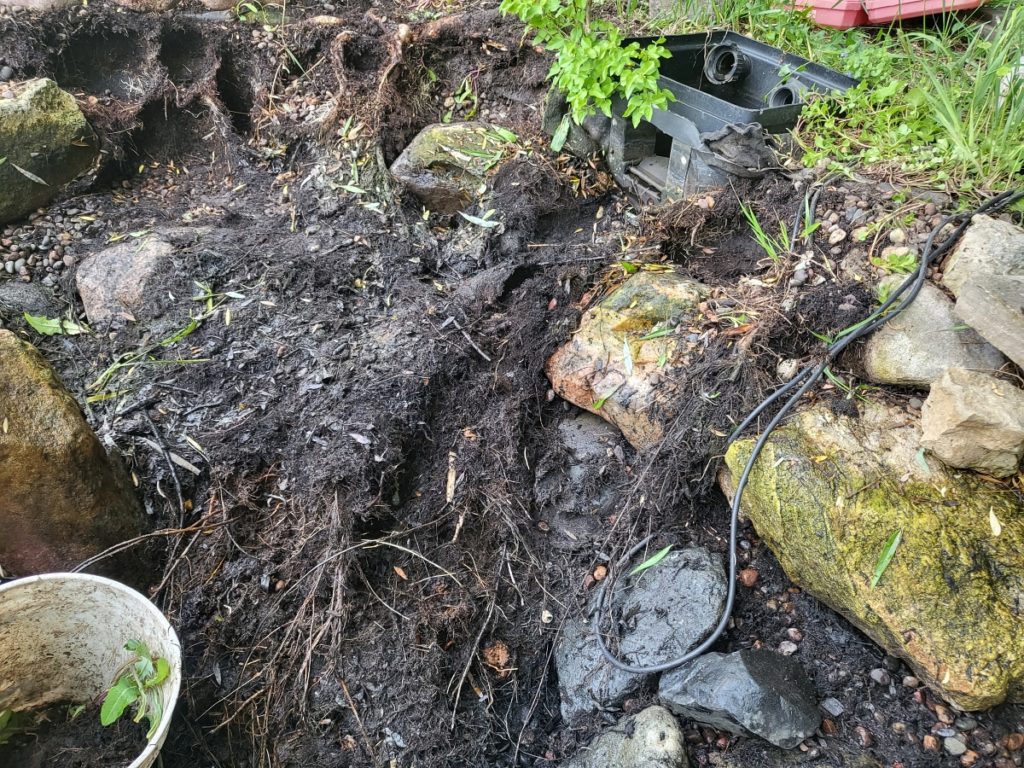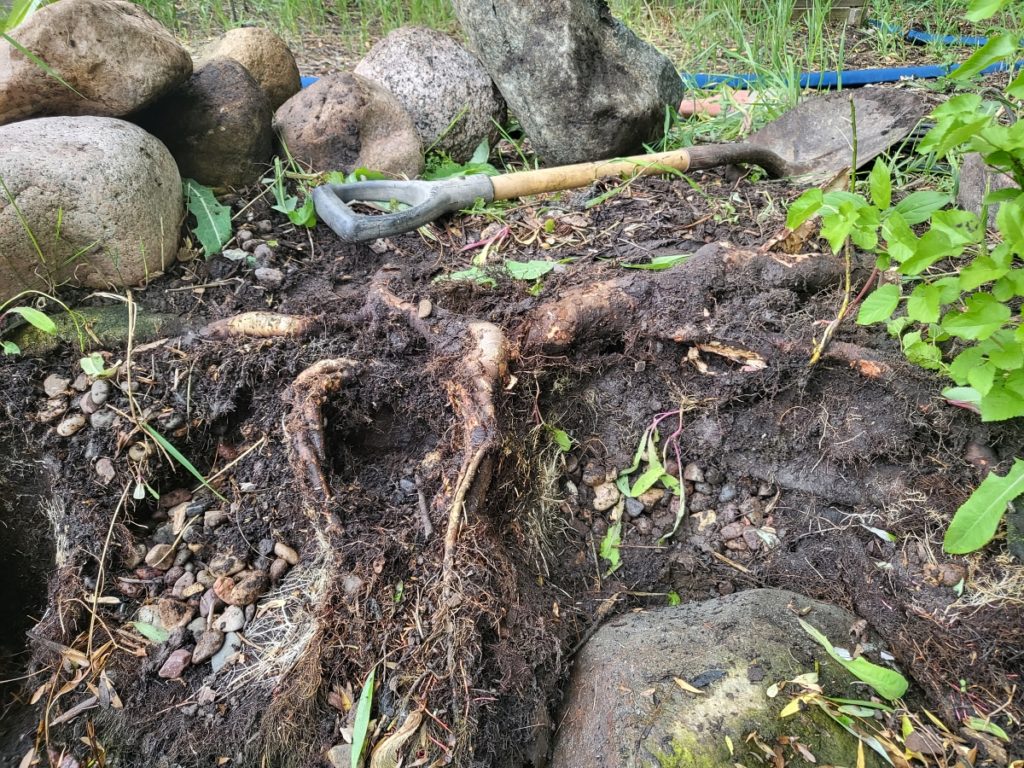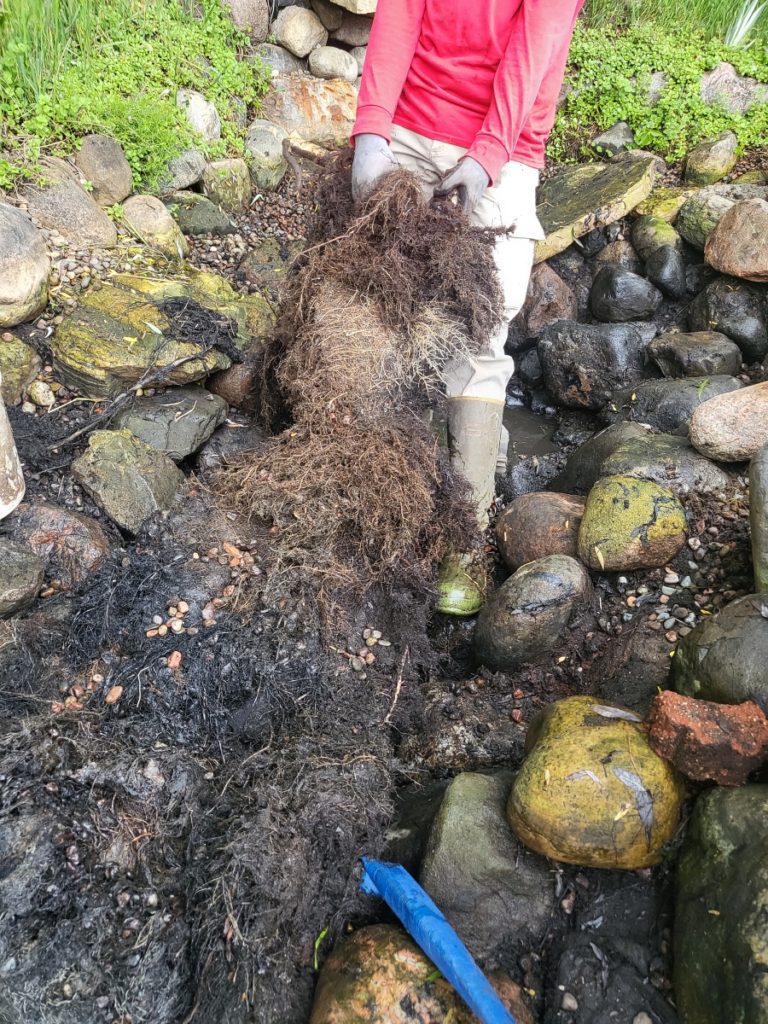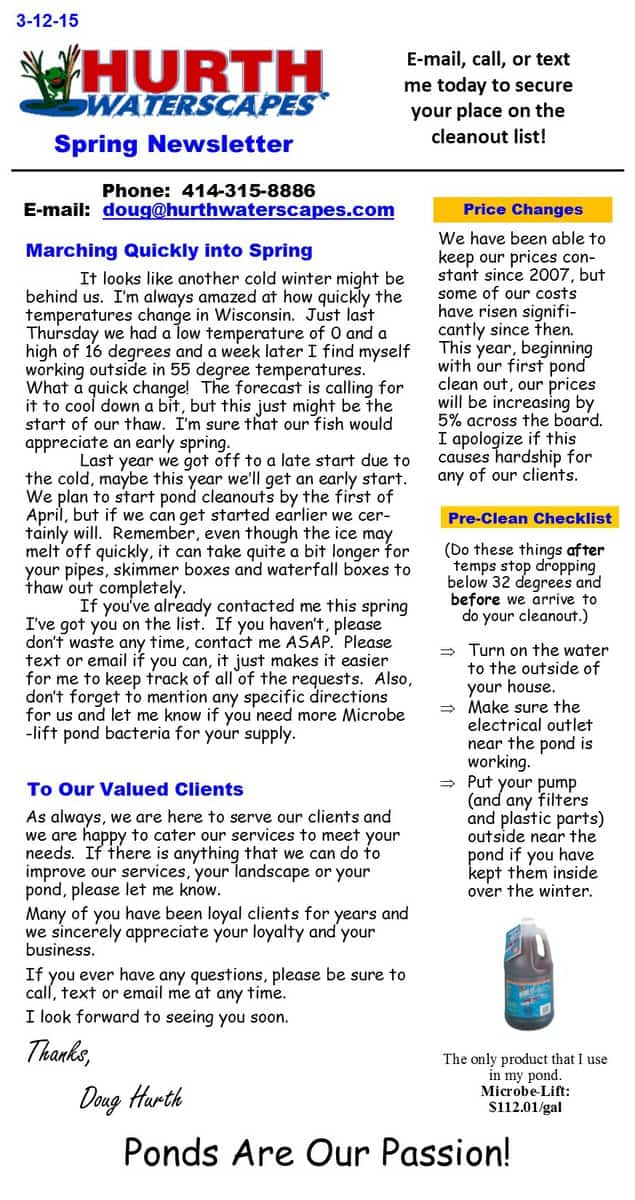As Wisconsin’s pond and waterfall experts, we here at Hurth Waterscapes get many different questions each year regarding the natural eco-system water gardens that we install. We will attempt to answer some of the more common questions with this article. If you have more questions, or simply need additional information, please don’t hesitate to call us at 262-268-1121. Ponds are our Passion, and we are happy to talk about them anytime.
What is a Water Garden?
The term water garden was developed to describe a natural living ecosystem pond that has rocks, fish, plants and water circulation. We believe that while a water garden may be a pond, a pond is not necessarily a water garden. To deserve the name water garden a pond needs to contain all of the above named parts and needs to be naturally maintained and balanced. Water circulation is critical to the health of a water garden and we prefer to circulate the water through the use of a sparkling, cascading waterfall.
What is an Ecosystem?
The word ecosystem is used to describe a natural system in which plants, animals and micro organisms live and interact with their surroundings.
Are Water Gardens hard to maintain?
A properly installed water garden should be very low maintenance. Some people enjoy working on their pond and purposely make it more work than is necessary. For these people it becomes their hobby. Others don’t want to or don’t have time to mess with a pond, and they shouldn’t need to. The most important thing to consider is that this is a natural pond. Natural ponds will have plant and animal growth and they will change with time. We as pond owners need to find the patience to let Mother Nature take her course and balance our ponds. Typically the first year of pond ownership is the hardest because the pond is new and out of balance and the owner is new and doesn’t know what to expect. If the pond is properly installed and allowed to balance, it will be low to no maintenance and will be beautiful.
Do I need to have fish in my pond?
No, you don’t need to have fish in your pond, but you will probably want to have fish. Many people don’t want fish for fear that they will need to be cared for as pets. This is not true. You do not need to feed the fish in your pond. This is a natural pond and as such will have abundant food present in it for the fish to eat. The fish actually help you maintain your pond by feeding on the algae and stirring up the bottom to help reduce sediment build up. Too many fish or overfeeding of fish will adversely effect water quality and should be avoided.
How many fish can I have in my pond?
Typically it is recommended to have one inch of fish for every ten gallons of water. Remember, fish will grow so plan accordingly. Gallons = length (in feet) x width (in feet) x average depth (in feet) x 7.48 obviously this is merely an estimate. Water gardens are never perfect squares or perfect depths and they also contain many rocks. Usually this calculation is higher than the true amount of water in a pond, but at least it gives us some idea.
What do I do with the fish in the winter?
Your fish will survive the winter in your pond as long as it is two feet deep and you keep a hole in the ice for oxygen exchange. The water will not freeze all the way to the bottom due to the heat of the ground below. A hole can be kept open with a floating heater, bottom aerator or bubbling pump. Occasionally we see problems with very cold winters and ponds that are raised up out of the ground behind a retaining wall or other structure which allows the frost to travel more deeply into the pond.
Can I leave my pond running over winter?
Yes you can, but it requires some advanced planning and a bit more work than shutting it down. You will need to keep a watchful eye out for areas where the water may be diverted out of your stream or waterfall. Ice blocking can occur in the stream just as in a natural stream. Depending on the design of your stream or waterfall, this could divert water out of the pond. Also, your pond will lose some water over winter due to evaporation, in which case it may need to be refilled with a garden hose. If you do keep it running, you will be able to enjoy the beautiful winter scenes that ice and snow can create. If you shut it down you will be able to enjoy the peace of mind that comes with not worrying about it for the winter.
What do I need to do to shut my pond down for the winter?
Clean leaves from the pond bottom, install a heater or pump to keep the ice open and remove the waterfall pump. Be sure to store the pump in a bucket of water in a spot where it will not freeze. Frozen pumps and pumps with dried out seals are bad.
When can I open/close my pond in the spring/fall?
When you open or close your pond is up to you, but typically we open ponds in early April and shut them down in late November or early December. You can open the pond up as soon as the ice in the pipes has thawed. You can shut the pond down as late in the year as you wish; it just gets harder to do the colder it is outside.
Why do I have algae in my pond?
Any healthy natural pond will have some algae in it. How much algae is the question. The amount of algae growth will depend on the amount of nutrients and sunlight available for the algae to grow. Cut down on the nutrients and sunlight and you will reduce the amount of algae. Reduce any surface runoff that is entering your pond. Runoff can carry large amounts of nutrients, especially if the area surrounding your pond is fertilized. Plant many aquatic plants in your pond. The aquatic plants will help to shade the water and they live and thrive on the same nutrients that the algae does. The more attractive plants that we have growing in the water, the less nutrients that will be available for the algae. Adding natural bacteria treatments to your water will help to digest any decaying matter in your pond which will in turn lessen the amount of nutrients available for algae. Last but not least, your fish will eat the algae if they are hungry. “Hungry fish make for a clean pond.”
How often do I need to clean my pond?
We recommend that owners try to remove leaves from the skimmer box and or water surface periodically over the season, especially during fall when the leaves are heavy. Before the pond freezes it is good to remove as many sunken leaves from the pond bottom as possible. Leaves will decay over the winter and reduce oxygen levels in the water. Some people like to clean out their ponds in spring. A full spring clean out would include removing all water and fish, removing all debris, pressure washing all rocks, checking all pond edges for settling, cleaning all filters and boxes, installing the pump, refilling the pond, adding water treatments and re-introducing the fish. Different people like to treat their ponds differently. Some people want their pond cleaned yearly; some every other year and other prefer not to clean their ponds. All of these methods work, you need to have a balance between your expectations and the ponds appearance. Technically the pond wouldn’t need to be cleaned at all if it were kept running constantly and was well-balanced.
Can I turn off my pump at night or when I go on vacation?
We recommend that you run your pump 24 hours a day seven days a week during the season. We do know of some people who shut their pond down at night, but we don’t recommend this as it may cause water quality issues. The pond circulation and aeration provided by the waterfall is critical to the living inhabitants of your pond such as fish and bacteria.
What is a Pondless Waterfall?
A pondless waterfall is simply that, a waterfall with out a pond. Some people prefer to have a pondless waterfall because they want to turn the water feature off and on as they see fit. Some people feel that they are safer because there is no standing body of water. Generally they require even less maintenance than ponds.
These are just a few of the most common questions that we get on a regular basis from the many pond owners that we get to meet. Hopefully we have shed some light on the water garden lifestyle for you. Stop in some time and talk to us about ponds, we are always willing to help and always eager to learn more from other experienced ponders.







